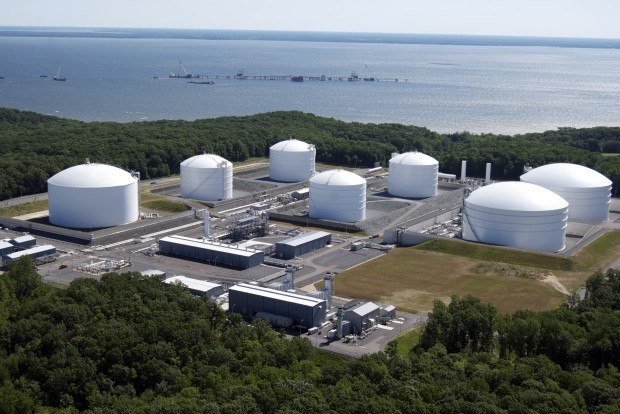With shale boom, U.S. expected to become net energy exporter

Dominion Resources
Dominion Resources' Cove Point terminal in Maryland is currently being converted from an import facility to an export terminal to ship Marcellus Shale gas to Asia.
Reversing a trend that has lasted more than half a century, the federal government predicts the U.S. will become a net energy exporter within 15 years, as the shale boom increases the production of crude oil and natural gas.
In its Annual Energy Outlook, the U.S. Energy Information Administration (EIA) says advanced technologies are reshaping the nation’s economy. The outlook includes predictions to 2040 and assumes a business-as-usual trend, with current laws and regulations going unchanged.
“With continued growth in oil and natural gas production, growth in the use of renewables, and the application of demand-side efficiencies, the projections show the potential to eliminate net U.S. energy imports in the 2020 to 2030 timeframe,” said EIA Administrator Adam Sieminski in a statement. “The United States has been a net importer of energy since the 1950s.”
The EIA expects the country will also switch from being a modest net importer of natural gas, to a net exporter by 2017. By 2040, the agency expects gas exports to range from 3 to 13 trillion cubic feet, depending on a high or low resource scenario. The agency predicts dry natural gas production to continue to grow, with most of that growth coming from the Marcellus and Utica Shales. This will cause a significant realignment of pipeline infrastructure, which many Pennsylvanians have already started to see.
The large supply of gas will also benefit the manufacturing sector, according to the EIA, with lower fuel prices. The agency expects consumption of natural gas and hydrocarbon gas liquids to increase by more than 50 percent by 2040. Most of that growth comes from an expansion in the petrochemical industry.
Renewable energy sources will also become more attractive in electric generation, according to the report, due to rising long-term natural gas prices, high capital costs of coal and nuclear power, slowing demand for electricity, and lower prices for renewables. The nation’s energy-related carbon dioxide emissions are also expected to stabilize over the next 25 years and stay below 2005 levels, thanks to better energy efficiency and less carbon-intense electric generation.
















